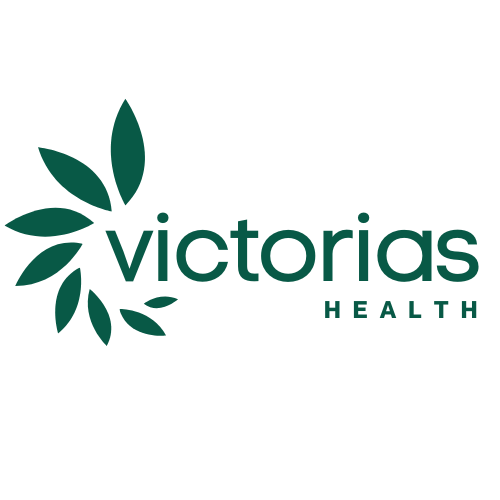Insurance is more than a financial product — it’s peace of mind. Whether you’re just entering adulthood, starting a family, or planning for retirement, your insurance needs evolve with each life stage. Making the right choices early on helps protect your health, income, assets, and loved ones.
This guide will walk you through choosing the right insurance at every life stage, with tables, tips, and strategies to make informed, confident decisions.
Key Takeaways
- Your insurance needs evolve with your life stages — revisit them regularly
- Term life is ideal when income protection is crucial; whole life may help with legacy planning
- Long-term care and Medicare gap plans are essential for senior health costs
- Always match your coverage with liabilities — kids, mortgage, business, or retirement goals.
Stage 1: Early Adulthood (18–29)

In early adulthood, insurance may feel like an afterthought, but it’s one of the most important times to start building a foundation of protection. At this stage, you’re likely entering the workforce, renting your first place, paying off student loans, or even buying your first car.
Health insurance is non-negotiable — whether through a job, a parent’s plan (until age 26), or the ACA Marketplace. Renter’s insurance is inexpensive and safeguards your belongings against theft or damage. If you drive, car insurance is legally required, and if you’re financially independent, disability insurance ensures that your income is protected in case of an unexpected injury or illness.
Starting a low-cost term life policy may also be smart if you have co-signed loans or anyone depending on you. This is the perfect time to lock in low premiums and start building smart habits that will serve you for decades.
Key Priorities:
- Starting career
- Managing student loans
- Budget-conscious living
- Basic financial protection
Recommended Insurance Options:
| Insurance Type | Why It Matters |
|---|---|
| Health Insurance | Essential for covering unexpected medical expenses. Check employer or ACA. |
| Renter’s Insurance | Covers personal belongings in case of theft, fire, or damage. |
| Auto Insurance | Legally required if you drive. Choose liability or full coverage. |
| Term Life Insurance | If you have co-signed loans or dependents. Affordable at this age. |
| Disability Insurance | Protects income if you’re unable to work due to illness or injury. |
Key Tips:
- Bundle renters and auto insurance for discounts.
- Compare health plans during open enrollment.
- Choose high deductibles to lower premiums if you’re healthy.
Stage 2: Marriage and Family (30–45)

As your responsibilities grow with marriage, children, and homeownership, your insurance needs increase significantly. This stage is about protecting your family’s future and ensuring financial stability. Life insurance becomes critical — a term policy that covers 10–15 times your income is a solid safety net.
You’ll also want comprehensive health coverage that includes your spouse and children, either through your employer or private plans.
Homeowners’ insurance protects your biggest investment, while disability insurance ensures that your family isn’t financially devastated if you can’t work. Adding umbrella insurance gives you extra liability coverage in case of a lawsuit or major accident. With dependents relying on you, this is the time to review and upgrade your insurance portfolio to reflect your lifestyle and liabilities.
Key Priorities:
- Income protection
- Children’s future
- Mortgage and long-term debt
- Shared financial responsibilities
Recommended Insurance Options:
| Insurance Type | Why It Matters |
|---|---|
| Life Insurance (Term) | Replaces income for your family if you pass away unexpectedly. |
| Health Insurance | Ensure coverage for spouse and kids. Explore employer family plans. |
| Homeowners Insurance | Required for mortgages. Protects structure and belongings. |
| Disability Insurance | Long-term coverage is critical for the family’s financial stability. |
| Umbrella Insurance | Extra liability protection if you own a home, assets, or host large gatherings. |
Protect your home, health, and loved ones. Now’s the time to build a security net for the people who count on you most.
Key Tips:
- Increase life insurance coverage if you have children.
- Compare policies every few years to avoid overpaying.
- Consider adding riders (e.g., child term, waiver of premium).
Stage 3: Midlife and Career Peak (46–60)

By midlife, you’re likely in your peak earning years, building wealth, and planning for retirement. This is the time to refine your insurance strategy to preserve what you’ve worked hard to achieve.
Many people in this stage consider switching from term to permanent life insurance, such as whole or universal life, for estate planning or as a tax-efficient legacy tool. Long-term care insurance becomes increasingly important, as nursing home or assisted living costs can be financially crippling without it.
You might also explore critical illness insurance for added protection against severe health events like cancer or heart disease. It’s crucial to reassess your existing policies—do you still need as much life insurance if your kids are grown?
Is your disability coverage still adequate? Taking a proactive approach now can prevent major stress and financial hardship later.
Key Priorities:
- Wealth preservation
- Preparing for retirement
- Long-term family support
- Advanced health needs
Recommended Insurance Options:
| Insurance Type | Why It Matters |
|---|---|
| Whole or Universal Life | Good for estate planning, tax-free wealth transfer, or permanent coverage. |
| Long-Term Care Insurance | Covers nursing home, assisted living, and in-home care costs. |
| Critical Illness Insurance | One-time payout for diseases like cancer or stroke. |
| Life Insurance Review | Reassess needs as kids grow up and mortgage decreases. |
| Health Savings Accounts | If on a high-deductible plan, build tax-advantaged savings for health costs. |
Key Tips:
- Secure long-term care coverage before age 60 — premiums rise quickly.
- Use life insurance as a legacy or retirement supplement tool.
- Review beneficiaries every 5 years or after major life changes.
Stage 4: Retirement & Senior Years (60+)

In retirement, your focus shifts from income generation to income protection and health management. Medicare becomes your primary health coverage at 65, but gaps in coverage make supplemental plans (Medigap or Medicare Advantage) essential.
Long-term care insurance is still valuable if not yet purchased — though premiums are higher, the cost of eldercare is even steeper. Final expense insurance can ease your family’s burden during an already difficult time by covering funeral and end-of-life costs. Life insurance, if kept, is often used to transfer wealth or pay estate taxes.
Many retirees also use annuities to guarantee a steady income stream throughout retirement. At this stage, insurance is not just about protecting assets, but about maintaining dignity, peace of mind, and financial freedom in your golden years.
Key Priorities:
- Income security
- Healthcare coverage
- Estate planning
- Legacy creation
Recommended Insurance Options:
| Insurance Type | Why It Matters |
|---|---|
| Medicare + Supplement Plans | Original Medicare may not cover everything; Medigap or Advantage Plans help. |
| Final Expense Insurance | Covers funeral costs, easing burdens on family. |
| Long-Term Care Insurance | Still critical if not yet covered; more expensive with age. |
| Annuities | Convert savings into guaranteed income streams. |
| Life Insurance (if estate) | Useful for legacy or wealth transfer planning. |
Your legacy matters. Set up plans that reduce financial stress for your loved ones while protecting your health and peace of mind
Key Tips:
- Enroll in Medicare during your initial eligibility window (3 months before 65).
- Consider gifting or estate strategies with a financial planner.
- Use permanent life insurance to cover estate taxes or leave an inheritance.
Insurance Needs by Life Stage

Your insurance needs don’t stay the same; they grow and shift with each chapter of life. In your 20s, basic coverage like health and renter’s insurance lays the groundwork. By the time you’re building a family or buying a home, the stakes are higher and so is the need for broader protection.
In midlife, you’re safeguarding wealth and preparing for long-term care, while retirement brings new priorities like Medicare, estate planning, and final expense coverage.
The table below breaks down exactly what coverage makes the most sense at each stage, helping you stay protected, prepared, and confident about the future.
| Life Stage | Must-Have Insurance | Optional/Strategic Add-ons |
|---|---|---|
| Early Adulthood | Health, Auto, Renter’s, Disability | Term Life, Identity Theft Protection |
| Marriage & Family | Health, Life, Homeowners, Disability | Umbrella, Critical Illness, Pet Insurance |
| Midlife/Career Peak | Health, Life, Long-Term Care, Disability | Whole Life, Critical Illness, HSA |
| Retirement/Senior Years | Medicare, Long-Term Care, Final Expense | Annuities, Estate-Focused Life Insurance |
The table below breaks down exactly what coverage makes the most sense at each stage — helping you stay protected, prepared, and confident about the future. You can find here a more detailed insurance tools and resources.
Final Words
Choosing the right insurance at every life stage isn’t just about protecting your assets, it’s about securing your future and giving yourself peace of mind.
As your life evolves, so should your insurance strategy. Regularly reviewing your policies ensures you’re always prepared for life’s “what-ifs,” and that’s a powerful kind of freedom.

